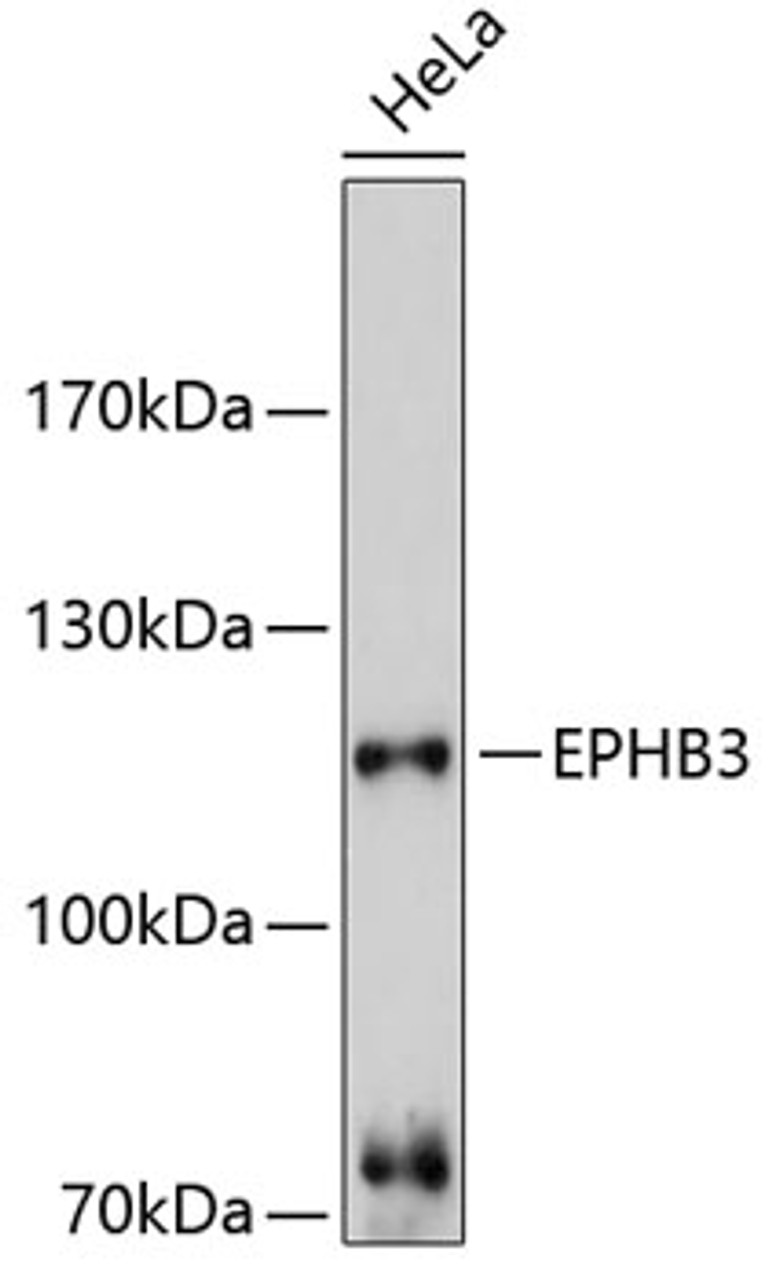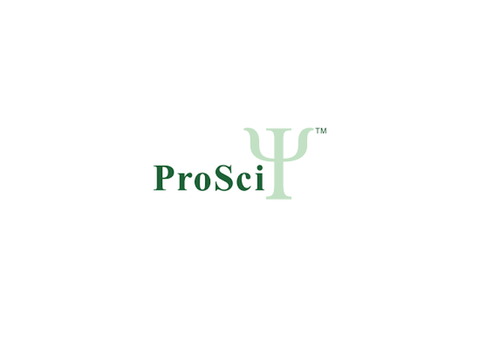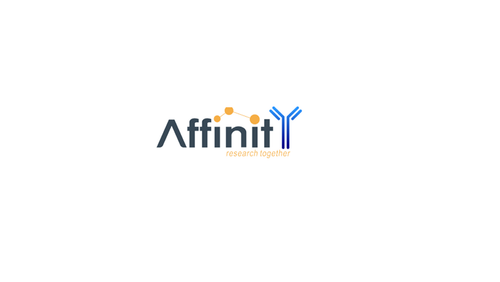Product Description
EPHB3 Antibody | 13-506 | ProSci
Host: Rabbit
Reactivity: Human, Mouse, Rat
Homology: N/A
Immunogen: Recombinant fusion protein containing a sequence corresponding to amino acids 270-560 of human EPHB3 (NP_004434.2) .
Research Area: Neuroscience, Signal Transduction
Tested Application: WB
Application: WB: 1:500 - 1:2000
Specificiy: N/A
Positive Control 1: HeLa
Positive Control 2: N/A
Positive Control 3: N/A
Positive Control 4: N/A
Positive Control 5: N/A
Positive Control 6: N/A
Molecular Weight: Observed: 110kDa
Validation: N/A
Isoform: N/A
Purification: Affinity purification
Clonality: Polyclonal
Clone: N/A
Isotype: IgG
Conjugate: Unconjugated
Physical State: Liquid
Buffer: PBS with 0.02% sodium azide, 50% glycerol, pH7.3.
Concentration: N/A
Storage Condition: Store at -20˚C. Avoid freeze / thaw cycles.
Alternate Name: EPHB3, Cek10, ETK2, HEK2 protein kinase, Embryonic kinase 2, EPH receptor B3, EPH-like kinase 2, Ephrin type-B receptor 3, MDK5, Sek4, TYRO6, EK2, EPH-like tyrosine kinase 2, EPH-like tyrosine kinase-2, HEK2, Human embryo kinase 2, Tyrosine-protein kinase TYRO6
User Note: Optimal dilutions for each application to be determined by the researcher.
BACKGROUND: Ephrin receptors and their ligands, the ephrins, mediate numerous developmental processes, particularly in the nervous system. Based on their structures and sequence relationships, ephrins are divided into the ephrin-A (EFNA) class, which are anchored to the membrane by a glycosylphosphatidylinositol linkage, and the ephrin-B (EFNB) class, which are transmembrane proteins. The Eph family of receptors are divided into two groups based on the similarity of their extracellular domain sequences and their affinities for binding ephrin-A and ephrin-B ligands. Ephrin receptors make up the largest subgroup of the receptor tyrosine kinase (RTK) family. This gene encodes a receptor for ephrin-B family members.
 Euro
Euro
 USD
USD
 British Pound
British Pound
 NULL
NULL












![EphB3 Antibody [APR05959G] EphB3 Antibody [APR05959G]](https://cdn11.bigcommerce.com/s-452hpg8iuh/images/stencil/500x659/products/868221/1160288/logo__92149.1659788186__64829.1659864284.png?c=2)

